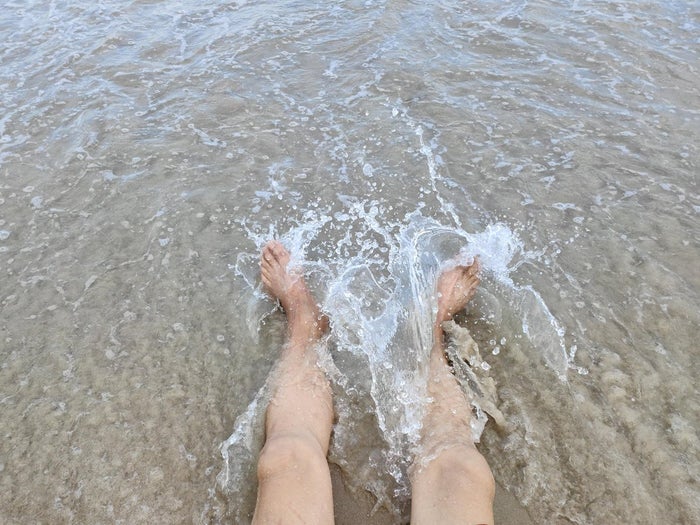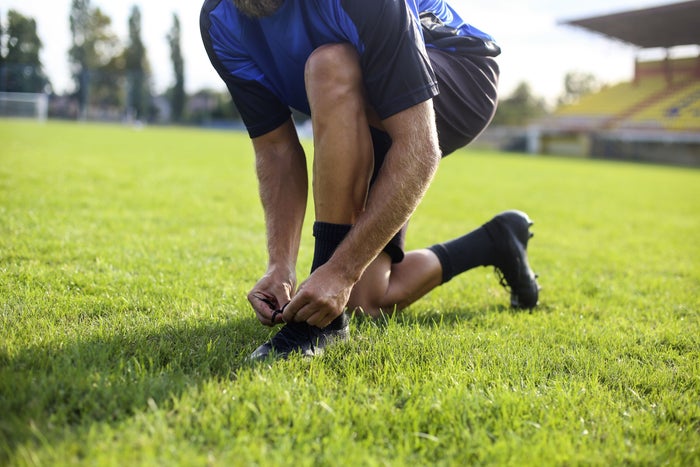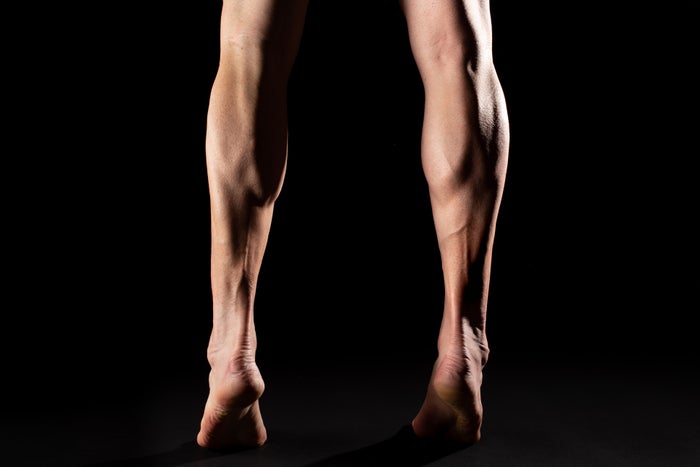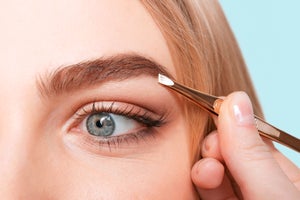
It’s no longer just women who shave their legs. Growing numbers of guys are now choosing to take their manscaping routines one step further by removing their leg hair, too.
For some guys, it’s all about giving their leg hair a slight trim for a neater look. Whereas others like to shave around the ankles if they’re wearing shoes that expose the bottom of their legs for a smarter finish. But the benefits of leg shaving aren’t all aesthetic. In fact, plenty of swimmers and cyclists also like to remove their leg hair as a way of boosting their athletic performance.
So, what is a good age to start shaving your legs? Most guys that go for this manscaping move start shaving around puberty – of course everyone’s body is different so it’s up to you to design your grooming routine around your ideal look!
You might also wonder should you shave your legs everyday – most guys find that hair grows back gradually so you can space trims out more than this but if you want a super close finish, this might be your new trimming ritual.

Shaving Legs for Sport
Why Do Footballers Shave Their Legs
Interestingly, famous footballers like Gary Lineker opted to shave their legs to make slide tackling less painful and shin pads more comfortable to wear. If you’re a keen football player, you might feel the benefit in this sport that involves lots of intense activity and friction.*

Do Runners Shave Their Legs?
If you’re training for a 5k or marathon, you might want to try shaving your legs – lots of runners hitting the track find that the reduced friction you get with this grooming step means less chafing. Anyone that’s gone for long distance goals before will know this really sets in as you rack up the step count.
Why Do Cyclists Shave Their Legs?
Removing your leg hair can streamline your body, which can be great for improving your performance when you’re competing or playing sports. That’s why so many cyclists and swimmers shave theirs.
And, of course, removing your leg hair makes removing any plasters much easier after an injury, making any cycling-related mishaps slightly less painful to manage, helping you to get back to your best in no time at all.
So, whether you’re doing it for sports or for aesthetic and personal reasons, shaving your legs can help you feel confident, comfortable, and well groomed.
However, removing leg hair isn’t all about the shaving part – it’s important to follow a shaving prep and aftercare routine, which helps prevent ingrown hairs on your legs, razor bumps, dry skin, and itchy legs after shaving.
Keep reading our leg shaving tips for men, including the best way to exfoliate and moisturise your legs afterwards for ultra-smooth, healthy skin.
How to Shave Your Legs
Here’s how to shave your legs in five easy steps:
1. Soften Your Leg Hair and Exfoliate
Have a shower or bath to get your skin ready for the razor. Warm water will soften your leg hair, making it easier for your blade to cut through.
Next, grab your favourite body scrub and loofah and get ready to exfoliate! Exfoliating is how you remove dead skin cells, dirt and oil from your pores, which helps you get a smoother overall result and streamline your sporting performance. It’s also one of the best way to prevent ingrown hairs on your legs.
Ingrown hairs are caused by dead skin blocking a hair follicle, causing the hair to grow backwards into the skin. Ingrown leg hairs can be painful and uncomfortable, cropping up in all sorts of places, including between your legs.
To remove dead skin off your legs and help to reduce the chance of ingrown leg hairs, simply apply a body scrub to your legs and gently work into your legs using the textured loofah, before washing off. Following up after shaving with a good-quality moisturiser will help you avoid itchy legs after shaving.
2. Trim Longer Hairs
Don’t go straight in with a razor blade to shave your legs – trim longer hairs down first to stop them from getting tangled in your razor. The Gillette All Purpose Styler and Beard Trimmer is the ideal gadget for this – it’s actually 100% waterproof, so you can use it while you’re still in the shower if you prefer.
If you just wanted to neaten up your leg hair slightly, you might want to leave your grooming session here – if that’s the case, move straight on to step 5.
Gillette All Purpose Styler: Beard Trimmer, Razor and Edger
3. Work Up a Lather
Next, you need to create a really good lather with your shaving gel or foam – work out which type of shaving cream you should go for here.
Our Fusion Men’s ProGlide Sensitive 2 in 1 Active Sport Shaving Gel is particularly good for manscaping, as it combines shaving with skincare for a smoother, more comfortable experience and a soft, refreshing finish.
Unsure what happens when you shave your legs dry? You’re likely to see irritation, nicks and cuts from your razor when you shave this way so we always recommend that you soften hair and exfoliate before you start doing male grooming.
4. Nail Your Technique
Stick with your Gillette All Purpose Styler and attach one of our ProGlide Razor Blades. You’ll get one included when you buy the Styler, but make sure you’re using a sharp one – and a different razor to the one you use on your face!
You can even get fresh razor blades delivered straight to your door when you sign up to a Gillette shaving subscription.
5. Rinse and Recover
Whether you want totally smooth legs or you’re just going for a slight trim, you should always end your grooming session by rinsing any excess shaving cream off your skin using warm water.
Next comes hydration! The best way to moisturise your legs starts with gently patting your skin dry using a plush, soft towel (rubbing with a rough towel can irritate your skin and cause itchy legs after shaving).
Then use an aftershave product like our Gillette Aftershave Balm to soothe your skin and lock in moisture, providing your legs with the hydration they need to remain smooth and healthy.
If you’re happy with the results, you can also use your Gillette Styler to trim and shave your armpit, back, head and even pubic hair. Just make sure you use a fresh blade for each body part…
Leg Shaving FAQs for Men
How Do I Remove Ingrown Hairs on My Legs?
The best way to get rid of your pesky ingrown leg hair is to first wash and gently exfoliate the area in a warm shower and a soft washcloth. This warm water will help to open up the follicle.
Is some of the hair protruding out of the skin? You can straighten the ingrown leg hairs using a sterilized set of tweezers – but be sure not to fully remove it. If you remove the ingrown hair before the enflamed area has healed, a new ingrown hair could grow in its place and you’ll be back to square one!
After a few days, the ingrown hair should begin to heal itself. Once the swelling is down, you can remove the ingrown hair using tweezers or shaving.

When Does Hair Stop Growing On Legs?
The slowing down of leg hair growth is a natural part of aging, though timelines will differ from person to person. Hair growth is also thought to be affected by the season. If its winter, you’ll be getting a little less Vitamin D from the sun, which helps to create new hair follicles and this might cause your leg hair to grow slightly slower. Hair tends to grow fastest between March and July.
Why Does My Leg Hair Grow Back the Next Day?
The speed at which your leg hair grows is largely down to your genetics, though diet, exercise, and skin care can play a part, too. Men’s leg hair that quickly grows back the next day is usually due to a higher level of androgens, the type of hormone responsible for body hair growth.
How Do I Slow Down Hair Growth on the Legs?
The main way you can slow down hair growth on legs is through laser hair removal, though this isn’t for everyone. Laser hair removal is a gradual process of thinning out hair using laser light and destroying the hair follicle. This prevents hair growing back in that area, though the effects aren’t 100% permanent. The process of laser hair removal usually takes 6 – 8 sessions to achieve long-lasting smooth legs.

* - https://www.dailystar.co.uk/sport/football/england-world-cup-shaved-legs-28530898









